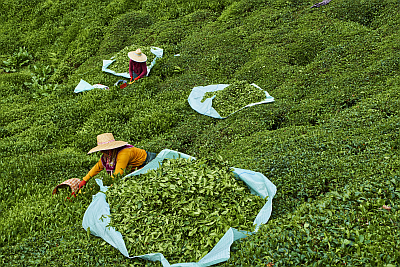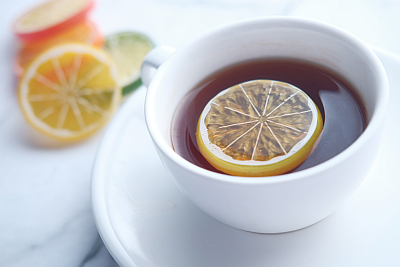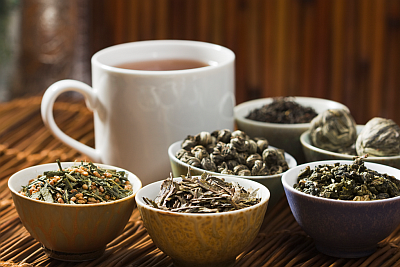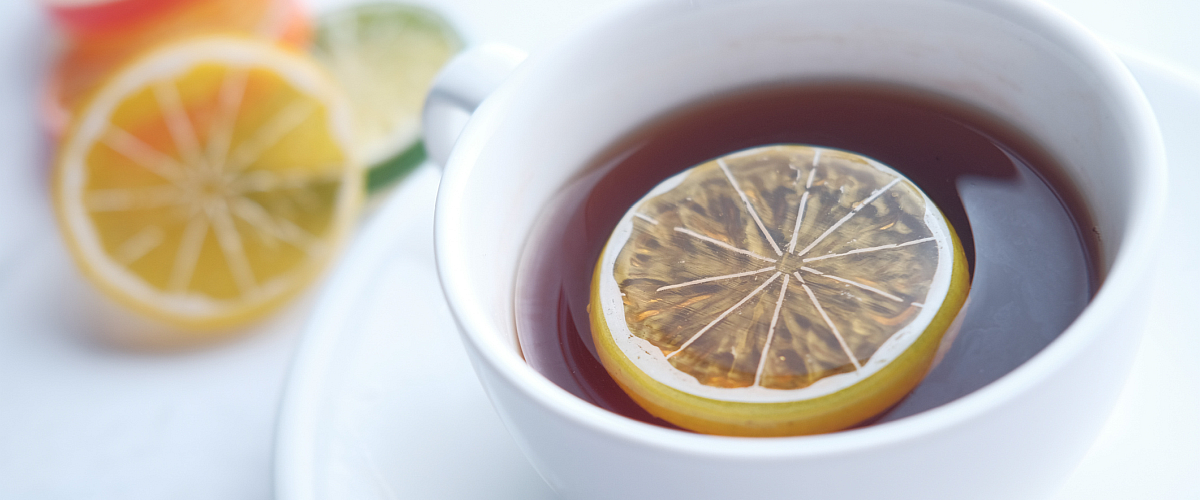Regardless of the season, nothing warms us up or cools us down quite like tea. And it turns out that your cup or glass of tea is one of the healthiest beverages around. It’s also one of the most popular. Tea is the second most consumed beverage in the world after water.
While many brews out there may call themselves “tea,” true teas are derived from a single plant, camellia sinesis, and are categorized as white, green, or black. Herbal teas, on the other hand, contain other botanical ingredients such as dried herbs, flowers, and fruits—so, technically, they’re not teas at all and don’t necessarily offer the same health benefits.

To learn more, we got in touch with two experts from an Aramark partner: Joy Dubost, PhD, RDN, Head of Nutrition for Unilever North America, and Rob Wallauer, Corporate Chef for Unilever Food Solutions. Unilever is the parent company that makes popular global tea brands like Lipton, TAZO, and Pure Leaf, just to name a few. Here Joy and Rob walk us through the different types of tea, their health benefits, and how to get the most from every sip.
TEA-MING WITH GOODNESS
What can tea do for your diet? “Tea is a great beverage option if you don’t care for plain water or want to switch things up,” says Joy. “On its own, tea has zero sugar, no calories, and is full of natural compounds called flavonoids.”
Here’s a round-up of the drink’s good-for-you qualities:
- It may help your heart: Tea is a big source of flavonoids—compounds that have been shown to have health benefits including supporting a healthy heart. “Drinking two to three cups of unsweetened brewed tea per day provides 200-500 milligrams of flavonoids which helps support a healthy heart as part of a diet consistent with dietary guidelines,” Joy says. “You’ll also find them in wine, cocoa, fruits and vegetables.”
- It may lower your chances of diabetes: Research has found a link between consumption of green and black tea anda lower risk for type 2 diabetes.
- It keeps you hydrated: Contrary to popular belief, tea’s caffeine content doesn’t dehydrate you. That’s because tea is 99.95% water. You’ll find only 20-50 milligrams of caffeine in the average cup, while eight ounces of coffee can contain two to six times that amount. “Tea is just as hydrating as water, and that little bit of caffeine may help you stay focused,” Joy adds.
THE TEA LINE-UP

If all true teas come from the same plant, then how do we end up with the many types? It all comes down to how the tea leaves are harvested. “Variations in the drying and oxidizing process yield the different colors and flavor profiles,” Chef Rob explains. “And, as with wine, tea’s flavors can pair well with different foods.”
Black tea is fully fermented, giving it the most robust flavor. It will taste bitter, stringent or malty depending on which region the tea is from and how it’s prepared.
It holds up well to food with higher fat levels, including the milk or cream it’s traditionally served with. “Black teas go great with savory comfort foods and heavier desserts,” Chef Rob shares.
Make your own: Take your black tea up a notch! Try this Citrus-Thyme Iced Tea from Unilever brand Lipton, then pair it with these hearty FYP365 recipes:

For a more delicate flavor, turn to green tea for less bitterness and astringency than fully fermented black tea. “Green teas are lighter in color and go great with a splash of lemon and honey,” advises Chef Rob.
Green tea pairs well with more health-conscious menu items, such as seafood and sushi, grain bowls and light curries. Come dessert time, Chef Rob enjoys it with dark chocolate, sorbet and crepes.
Make your own: Personalize Lipton’s Green Tea with mint or the fresh fruit of your choice, then try it with these tasty FYP365 recipes:
- Herbed Halibut & Spring Vegetables en Papillote
- Pumpkin-Curry Vegetable Sauté
- Vegan Aquafaba Chocolate Mousse
The other major type of tea is the most exotic: Oolong. Hailing from China (where all tea got its start thousands of years ago), oolong is defined by its partial fermentation process. “Oolong’s flavor profile is similar to green tea—but what separates it is the quality and care that goes into production,” Chef Rob says. “The tea leaves are often sun-dried on bamboo mats and then rolled by hand so as not to damage them.”
Make your own: Enjoy whatever store-bought oolong appeals to you, and try these dishes to go with it:
MORE TIPS

Joy and Chef Rob have a few more tips to keep handy when you make your next cup.
- Understand the grades: You might see teas marked as “premium;” what does it all mean? “This speaks to the overall quality of the tea,” explains Chef Rob. “Generally the top two leaves and the bud make it into premium tea, and the grades progress as you go further down the plant. But the grade can also reflect how the tea is handled—hand-rolled versus cut, for example.”
- Store it right: For best flavor, keep your teas in their original (ideally airtight) packaging and store in a cool, dry place. “Teas are, by definition, dehydrated. This means they will pick up any humidity and flavors they are exposed to,” Chef Rob says. Joy reminds us that when stored correctly, the flavonoids in the tea will remain stable.
- Mind steep times: Use boiling water for best results, even if your goal is iced tea. Most black and green teas should steep for three to four minutes. “But always check the packaging for what the manufacturers recommend. Some oolongs are meant to be steeped for less than that,” Chef Rob points out.
- Be savvy with add-ins: As with coffee, your cup of tea can overflow with extra calories if you’re not careful. “Use skim or low-fat milk and go easy on the added sugar—or skip these entirely if you can,” recommends Joy. “That way, you can enjoy the flavor of the tea itself.”
START STEEPING
There’s more to tea than meets the eye (and taste buds). Each steamy cup is brimming with healthful nutrients and asking to be paired with more than your morning whole grain toast.
If you’re interested in learning more about another hot or cold favorite, check out our blog on the need-to-knows about coffee.
Thanks to our friends from Unilever Food Solutions for this tea appreciation!
Note: Since everyone’s health history and nutritional needs are so different, please make sure that you talk with your doctor and a registered dietitian to get advice about the diet and exercise plan that‘s right for you.

